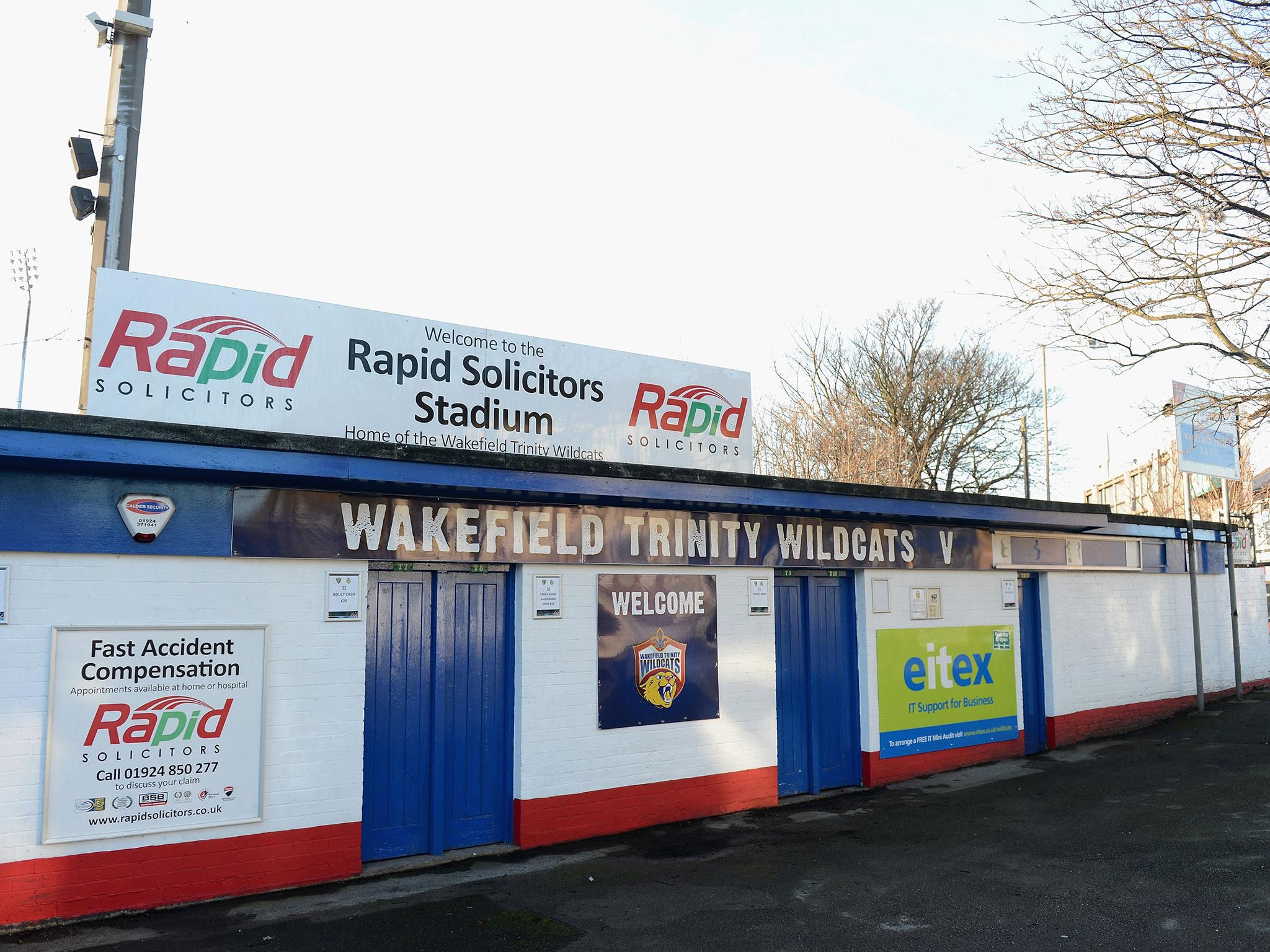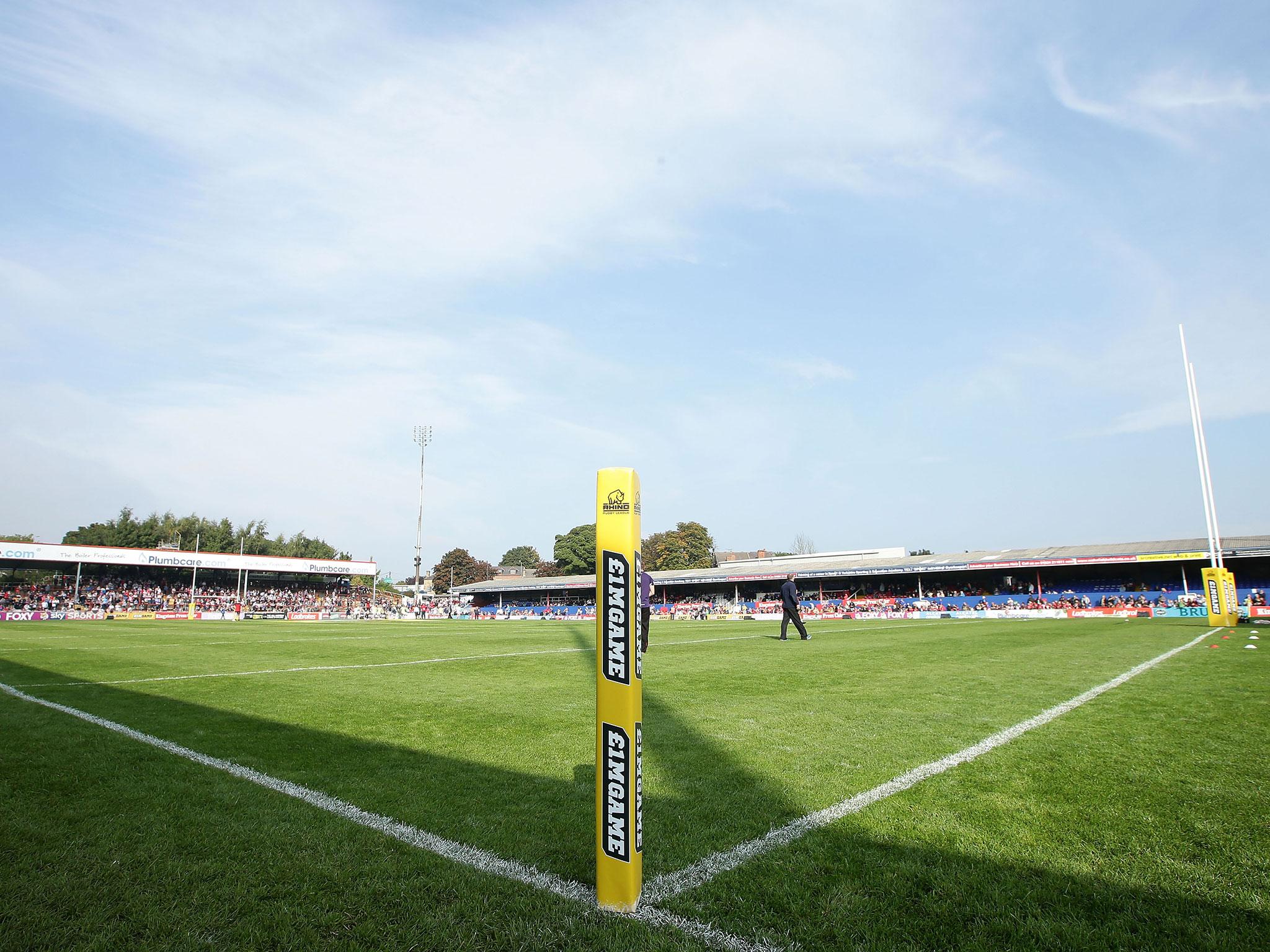Decline and fall of a sporting giant: Wakefield Trinity faces a fight for its very existence
With Trinity's iconic Belle Vue stadium unfit for purpose, the club is now fighting for its future as it attempts to secure funding to build a new ground

Your support helps us to tell the story
From reproductive rights to climate change to Big Tech, The Independent is on the ground when the story is developing. Whether it's investigating the financials of Elon Musk's pro-Trump PAC or producing our latest documentary, 'The A Word', which shines a light on the American women fighting for reproductive rights, we know how important it is to parse out the facts from the messaging.
At such a critical moment in US history, we need reporters on the ground. Your donation allows us to keep sending journalists to speak to both sides of the story.
The Independent is trusted by Americans across the entire political spectrum. And unlike many other quality news outlets, we choose not to lock Americans out of our reporting and analysis with paywalls. We believe quality journalism should be available to everyone, paid for by those who can afford it.
Your support makes all the difference.Rugby League was a less complicated place in 1963 when Wakefield Trinity’s Belle Vue ground was used as a backdrop for the legendary film of David Storey’s novel ‘This Sporting Life.’
The club were on their way to back-to-back titles at the time. No-one would pretend the place was a palace in the days of the ‘water-splash’ final – one of the most iconic Challenge Cup matches of all time, when Don Fox topped an under-the-posts conversion at a drenched Wembley – but now the club finds its very existence hinging on such arcane issues as ‘Section 106’ commitments and ‘unilateral planning agreements.’ The future suddenly looks extremely grim.
The sport’s Super League demands a certain standard of stadium – at least 2,500 covered seats – and the state of Belle Vue, thought to be the oldest professional sports ground in the world, is so far off such requirements that is has been pleading for dispensation for several years.

A solution seemed to have been signed and sealed five years ago when a property firm was granted potentially lucrative permission to develop a 200-acre parcel of green belt near the M62 and M1 motorway. A letter from the Department for Communities and Local Government (DCLG), seen by The Independent, states, in black and white, that the Newmarket site could be reclassified for industrial development so long as the developer - York Court Properties - ensured a tangible community benefit, by contributing £9m towards the cost of a new stadium: a common planning trade-off known as a Section 106 agreement. “The Secretary of State is minded to give planning permission subject to the receipt of a satisfactory planning obligation (a 106 agreement),” Planning Inspectorate decision officer Pamela Roberts wrote to all interested parties in 2012.
And that is when the situation became messy. Five years on, not a single brick of the anticipated Newmarket Stadium has been laid, despite Wakefield Council spending £150,000 on detailed plans of what it might look like. Rather than be tied to the terms of the letter, the developer was allowed to sign up to a “unilateral undertaking” – bureaucrat-speak for an agreement in which the local council doesn’t get a say. This has meant that the firm would only start to pay out for the stadium once it got a substantial 60,000 sq ft of industrial unit space on the land occupied by businesses.

Occupancy at the industrial site is nowhere near that level and a massive cold store facility which would go half way towards triggering spending on a stadium doesn’t count because it is too high to be included within the terms of the initial planning agreement.
The club’s co-owner Chris Brereton is astonished that a lucrative slice of development land has been opened up to an developer without any payback ensuing, when the letter said there must be one. The council has failed to hold the developer to account, he told The Independent.
Day to day, it’s a mission...
It’s always sure sign that there is a difficult case to answer when a council leader is reluctant to be interviewed and The Independent’s requests to speak to Wakefield’s Peter Box prove unsuccessful. Instead, it was the acting chief executive, Andrew Wallhead, who said that the issue was out of the council’s control and was in the DCLG’s hands once the issue had been called in ’for public inquiry.’ Wallhead said if the council had been given a say it may not have demanded funding towards a stadium be triggered by a lower level of development on the site. “But we can’t force developers to develop (at the required pace to get a) stadium built,” Mr Wallhead said.
The council says that the planning permission was granted in the depths of a recession, so businesses were not exactly queuing up to relocate. But a drive up the British motorway network reveals that a site like this one, near the intersection of two motorways, is marketable. The rugby league clubs of Leigh, Salford, St Helens and Huddersfield are all playing in new stadia funded by the council through Section 106 agreements. It has certainly not been Wakefield Council’s finest hour.

The council have even managed to agree a Section 106 to get the other rugby league team with a Wakefield postcode - Castleford - a new stadium. Castleford are expected to leave Wheldon Road to occupy it next year. But Brereton’s frustrations are also compounded by the work that he and chairman Michael Carter have undertaken to get the club out of the financial mire. The club had run up £2.5m in debt in just two-and-a-half-years’ trading when the pair took it over in 2013. They used the £400,000 cash lump sum received from a new Sky TV deal a year later to get the outfit debt free, as they took cost out of the business.
“We don’t spend big and we don’t often get big results,” said Brereton. “Day to day, it’s a mission. It’s very difficult and the extra revenues that a new stadium could bring us would change the picture. In business, you can’t operate on one trading day in 14 as we do now. I don’t believe there’s a club that can find the cost of a new stadium out of its own funding stream. You either need a spectacularly wealthy backer or a council that can achieve what several have for their clubs. All the new rugby league stadiums in the M62 corridor have been built by the council 100 per cent and delivered by 106 agreements.”
The club’s plight - and the relatively modest sum needed to set Trinity on their feet - asks questions of the nation’s priorities. The government can afford to top up UK Sport with an extra £30m for the 2020 Tokyo Olympics spending round without blinking. Some have suggested that Wakefield might share rivals Castleford’s new stadium, though that seems unlikely. Times might have changed in west Yorkshire rugby league territory, but rivalries are immutable.
Join our commenting forum
Join thought-provoking conversations, follow other Independent readers and see their replies
Comments